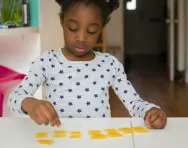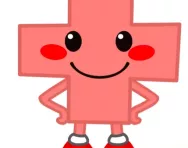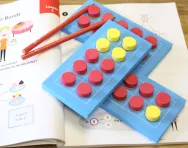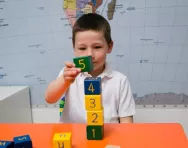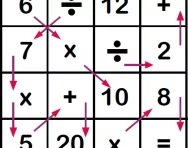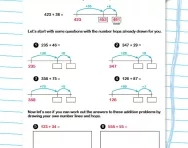Important update from TheSchoolRun
For the past 13 years, TheSchoolRun has been run by a small team of mums working from home, dedicated to providing quality educational resources to primary school parents. Unfortunately, rising supplier costs and falling revenue have made it impossible for us to continue operating, and we’ve had to make the difficult decision to close. The good news: We’ve arranged for another educational provider to take over many of our resources. These will be hosted on a new portal, where the content will be updated and expanded to support your child’s learning.
What this means for subscribers:
- Your subscription is still active, and for now, you can keep using the website as normal — just log in with your usual details to access all our articles and resources*.
- In a few months, all resources will move to the new portal. You’ll continue to have access there until your subscription ends. We’ll send you full details nearer the time.
- As a thank you for your support, we’ll also be sending you 16 primary school eBooks (worth £108.84) to download and keep.
A few changes to be aware of:
- The Learning Journey weekly email has ended, but your child’s plan will still be updated on your dashboard each Monday. Just log in to see the recommended worksheets.
- The 11+ weekly emails have now ended. We sent you all the remaining emails in the series at the end of March — please check your inbox (and spam folder) if you haven’t seen them. You can also follow the full programme here: 11+ Learning Journey.
If you have any questions, please contact us at [email protected]. Thank you for being part of our journey it’s been a privilege to support your family’s learning.
*If you need to reset your password, it will still work as usual. Please check your spam folder if the reset email doesn’t appear in your inbox.
What is Numicon?
Learning about number can be tricky for young children. It’s a highly abstract concept, and many children struggle to make sense of it.
Numicon, developed by education publisher Oxford University Press (OUP) is a resource that’s used in many schools to support maths teaching, particularly in the Early Years and Key Stage 1.
It’s a system of flat plastic shapes with holes in, with each shape representing a number from one to 10. Each number has its own colour.
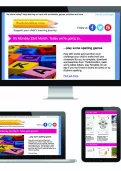
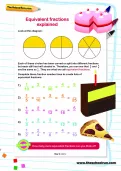
Boost Your Child's Learning Today!
- Start your child on a tailored learning programme
- Get weekly English & maths resources sent direct to your inbox
- Keep your child's learning on track
The aim of Numicon is to make numbers real for children through them being able to see and touch them. It fits in with the Maths Mastery approach that’s used in many schools, providing a concrete object to represent each number.
It also has a multi-sensory approach that’s known to help learning.
‘I find Numicon extremely useful as a maths aid, as it’s very visual and children can hold, manipulate and explore the pieces,’ explains Reception/Year 1 teacher Jess Breakell.
‘I always find it amazing how quickly the children learn which piece represents each number. At an early age, they can start to see what a number actually looks like and how it compares to other numbers.’
How Numicon works
Each Numicon shape gives children an image of what a number looks like. They begin to see the relationship between numbers, with each piece having one hole more than the previous one.
It appeals to their strong sense of pattern, and helps them understand how numbers fit together.
Children using Numicon typically progress through four stages:
Pattern: for example, finding shapes that match and stacking them on the peg board.
Ordering: putting the shapes into sequence from the smallest to largest number, and vice versa.
Counting: counting each hole one by one to find out what number the piece represents.
Early calculating: using the pieces to solve simple problems, for example working out that a three-piece and a four-piece are equal to a seven-piece.
By giving children something physical that they can get their hands on, not just paper and pen, they develop confidence and a greater understanding, which leads to higher achievement: over 90% of teachers feel that Numicon has a positive impact on children’s learning.
Numicon in the Early Years
Numicon is often introduced to children in the Early Years. At first, they might simply play with the shapes as objects, even using them with playdough, water or sand.
‘In Nursery and the beginning of Reception, the pieces can be used to help develop children’s understanding of shape,’ Jess explains. ‘Using Numicon boards, children can create different shapes and patterns.’
As they become more familiar with the pieces, they’ll start to call them by their number name.
‘Lots of mathematical language can be developed,’ says Jess. ‘Children enjoy using the Numicon and Numicon pegs to make towers, again developing mathematical vocabulary.’
Moving on, children can use Numicon in conjunction with a number line to put the pieces in order. They begin to understand the concept of ‘more than/less than.’ They can find pieces that match, and start to recognise which numeral relates to each Numicon shape.
Numicon in Key Stage 1
As the children move into Key Stage One, Numicon can be used to help children order numbers, explore tens and ones, add and subtract, continue patterns, explore odd and even numbers, partition, and much more.
‘The resource is very good when teaching number bonds to 10,’ Jess explains. ‘A child can get a 10-piece and then use the other pieces to find two that fit on top. So a seven and a three would cover the 10, as would two fives, a six and a four, and so on.’
Other concepts that children can learn through Numicon include geometry, symmetry, sharing and even weight: fascinatingly, the pieces are weighted so that a 10-piece weighs the same as two five-pieces, or a six- and a four-piece combined.
Numicon can also be used very effectively when children start to learn times tables.
‘For examples, when learning the five times tables, the children can pick up the necessary number of five-pieces and use them to help them count in jumps of five,’ Jess says.
‘Through using Numicon, children develop their ability to “see” a number. I often say that children need to have a number line in their head, and this resource helps.’
Numicon in Key Stage 2
As children become more confident with numbers, they typically move away from using physical props to using pencil and paper and eventually to mental maths, but Numicon can still be used effectively in the upper years of primary school.
‘Generally, children naturally move away from equipment as they get older, but when introducing any new topic, it’s often helpful if they use actual objects to start with, then they move onto drawing and pictures and finally more formal written methods,’ Jess explains.
‘Numicon can still be very useful in Key Stage 2 when a new area is being explored. For example, when teaching fractions, it’s a great way to show what a fraction of a number actually looks like. Similarly, when learning to bridge over 10 or 100, Numicon can help.’
OUP also has a programme of study called Numicon Big Ideas, which consists of activities aimed specifically at Key Stage 2 pupils who aren’t meeting the expected maths standard for their age.
Numicon at home
As well as being widely used in schools, Numicon is also available to use at home, and can be a great companion to what children are learning in the classroom, helping them develop a better understanding of the connections between numbers.
‘I’m not a huge fan of parents feeling they need to go out and spend lots of money on resources,’ says Jess. ‘However, if I had to recommend one product to help a child who was struggling with maths, it would be Numicon.’
